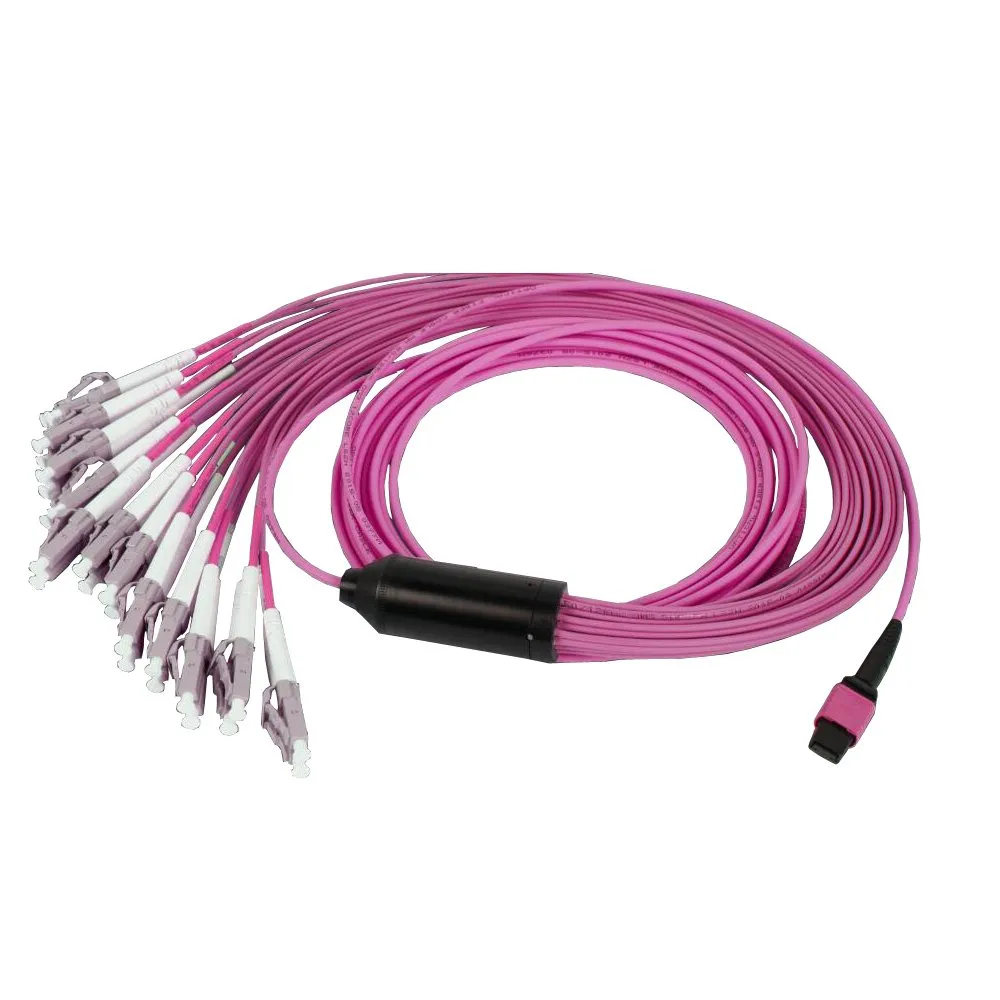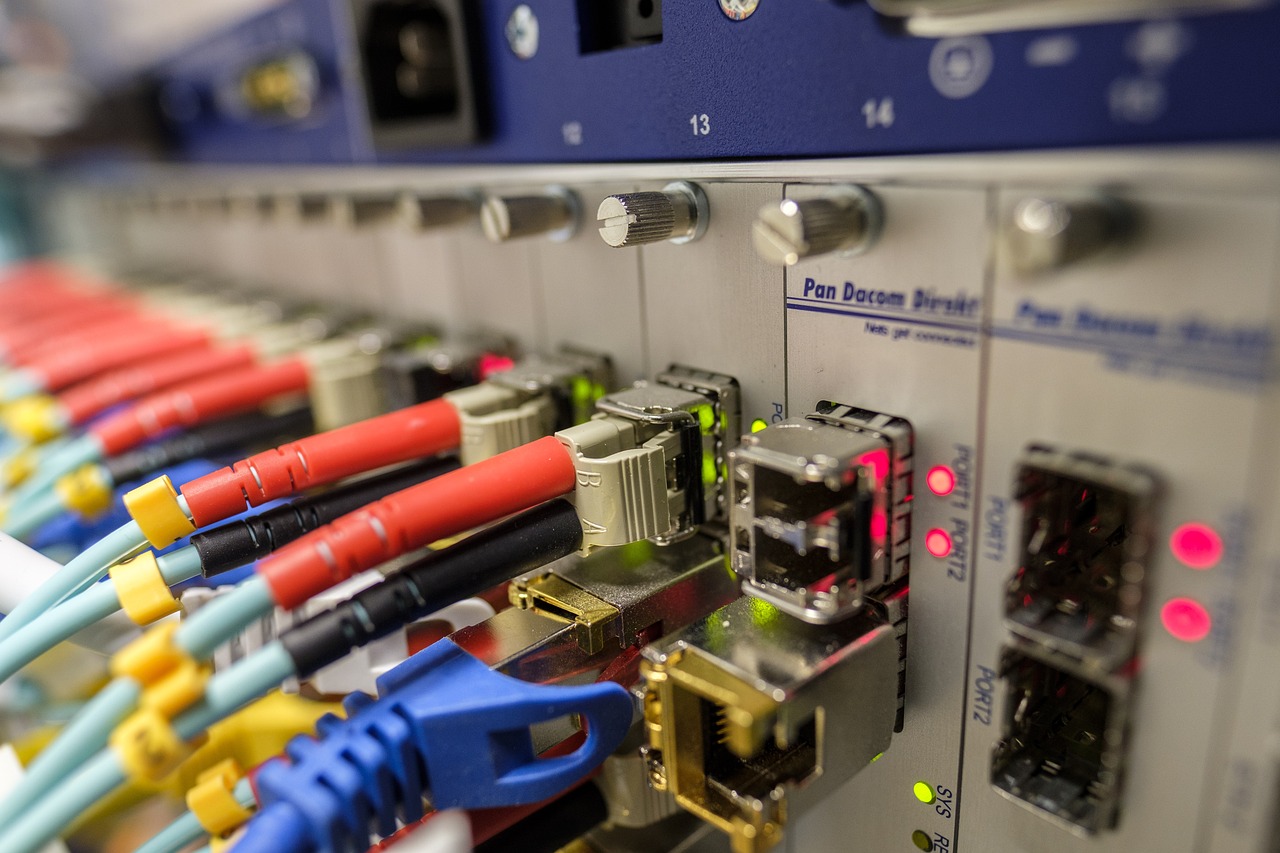Understanding the Benefits of MTP to LC/UPC OM4 Multimode Hardness Optical Cable

A Quick Dive into OM4 Multimode Cables
When it comes to building a reliable and high-performing network infrastructure, OM4 Multimode cables are a top choice for many organizations. Let's explore what sets OM4 Multimode cables apart and why they play a crucial role in high-speed networks.
What Makes OM4 Multimode Stand Out
The Basics of OM4 Multimode
First and foremost, it's essential to understand the basics of OM4 Multimode cables. These cables are designed to carry multiple light rays simultaneously, thanks to their larger core size compared to single-mode fibers. This characteristic enables them to transmit data over short to medium distances with impressive efficiency.
Why Choose OM4 for Your Network
Choosing OM4 Multimode for your network means investing in a future-proof solution that can accommodate increasing bandwidth demands. With its ability to support higher data rates, this type of fiber optic cable is well-suited for modern networking requirements.
The Role of OM4 in High-Speed Networks
Supporting Faster Data Rates
In today's digital landscape, speed is paramount. OM4 Multimode cables excel at supporting faster data rates, making them ideal for applications that demand rapid and reliable data transmission. Whether it's streaming high-definition media or transferring large volumes of data, these cables ensure seamless connectivity.
Ensuring Long-Distance Reliability
While some may associate multimode fibers with short-distance transmissions, OM4 Multimode cables defy this limitation by offering enhanced reliability over longer distances. This capability makes them a versatile choice for various networking setups where consistent performance over extended spans is essential.
The Magic Behind 24-core MPO Technology
In the realm of network infrastructure, the 24-core MPO technology represents a significant advancement in connectivity solutions. Let's delve into the intricacies of this technology and understand how it revolutionizes network performance.
Unpacking the 24-core MPO
Understanding Core and Cladding
When we talk about 24-core MPO technology, we are essentially referring to the structure of the fiber optic cable. The "core" is the central part through which light propagates, while the "cladding" surrounds the core, ensuring that light remains confined within it. In 24-core MPO cables, this structure is replicated across 24 individual cores, allowing for enhanced data transmission capabilities.
The Benefits of More Cores
The incorporation of 24 cores within a single cable brings forth a multitude of benefits. With more cores available for transmitting data, these cables can handle significantly higher bandwidth demands. This means that networks utilizing 24-core MPO technology can support an increased volume of data traffic without compromising on speed or reliability.
How 24-core MPO Enhances Connectivity
Facilitating High-Density Connections
One of the primary advantages of 24-core MPO technology lies in its ability to facilitate high-density connections. By accommodating more cores within a single cable, it enables seamless connectivity for numerous network components, such as switches, routers, and servers. This high-density capability streamlines network architecture and optimizes space utilization within data centers and telecommunications facilities.
Simplifying Network Upgrades
In addition to enabling high-density connections, 24-core MPO technology simplifies network upgrades by providing ample room for scalability. As network requirements evolve and expand, organizations can seamlessly integrate new equipment and technologies without overhauling their existing cabling infrastructure. This scalability ensures that networks remain agile and adaptable to future technological advancements.
Why LC/UPC Connectors Matter
In the realm of network connectivity, LC/UPC connectors play a pivotal role in ensuring seamless and efficient data transmission. Understanding the basics and advantages of LC/UPC connectivity is essential for organizations looking to optimize their network infrastructure.
The Basics of LC/UPC Connectivity
What is LC/UPC?
LC/UPC connectors, standing for Lucent Connector/Ultra Physical Contact, are widely recognized for their compact design and reliable performance. These connectors feature a 1.25mm ceramic ferrule, making them smaller than traditional connectors such as SC or ST. The reduced size of LC/UPC connectors contributes to higher port density, allowing for more connections within limited space.
The Importance of Physical Contact
The term "Ultra Physical Contact" in LC/UPC signifies the emphasis on maintaining precise physical contact between fiber optic cores during data transmission. This meticulous alignment minimizes signal loss and ensures that the transmitted data arrives at its destination with optimal integrity. As a result, LC/UPC connectors are renowned for delivering consistent and high-quality signal transmission across networks.
Advantages of Using LC/UPC in Your Network
Improved Signal Quality
One of the primary advantages of incorporating LC/UPC connectors into your network infrastructure is the significant enhancement in signal quality. The meticulous physical contact maintained by these connectors minimizes insertion loss and return loss, thereby preserving the integrity of transmitted signals. This translates to improved network performance and reliability, especially in high-demand environments where signal degradation must be minimized.
Ease of Use and Versatility
Beyond their technical capabilities, LC/UPC connectors offer unparalleled ease of use and versatility. Their compact form factor simplifies installation processes, particularly in confined spaces where larger connectors may pose challenges. Additionally, their compatibility with various fiber types and applications makes them a versatile choice for diverse networking requirements. Whether used in telecommunications facilities or enterprise networks, LC/UPC connectors provide a flexible solution that adapts to evolving connectivity needs.
MTP: The Backbone of Modern Networking
Understanding MTP and Its Importance
The Evolution of MTP
The MTP (Multifiber Termination Push-on/Pull-off) connector has undergone a remarkable evolution, transforming the landscape of network connectivity. Initially developed to streamline fiber optic cabling in high-density environments, MTP connectors have evolved to meet the escalating demands of modern networking infrastructures. This evolution has led to the introduction of advanced features and enhanced capabilities, solidifying MTP's position as a cornerstone of contemporary networking solutions.
Why MTP is a Game-Changer
The significance of MTP lies in its ability to revolutionize network deployment and management. By enabling rapid and reliable connections for numerous fibers within a single interface, MTP technology simplifies complex cabling setups while ensuring optimal performance. This game-changing characteristic not only accelerates network installations but also enhances scalability, making it an indispensable component for evolving network architectures.
MTP in Action: Real-World Applications
Case Studies: Success Stories
Real-world applications demonstrate the tangible benefits of integrating MTP technology into diverse networking environments. From data centers to telecommunications networks, organizations leveraging MTP connectors experience streamlined installations, improved signal integrity, and enhanced overall network efficiency. These success stories underscore the pivotal role played by MTP in addressing the evolving connectivity needs of modern infrastructures.
Future-Proofing Your Network with MTP
Looking ahead, future-proofing network infrastructures is a paramount consideration for organizations seeking sustainable growth and adaptability. Embracing MTP technology serves as a strategic approach to future-proofing networks by laying the foundation for seamless expansion and integration of advanced technologies. As networking requirements continue to evolve, MTP empowers organizations to stay ahead of the curve and proactively address emerging connectivity challenges.
See Also
Contrasting MTP vs. LC/UPC Optical Cables for 100G Networks
Essential Characteristics of 12-Core MTP Optical Cable for 100G Networks
Contrasting LC/UPC vs. SC/UPC Connectors for Multimode Fiber Patch Cables
Advantages of Utilizing MTP/MPO Cables for High-Speed Data Transfer
Premium Fiber Optic Patch Cables with LC/UPC Connectors for Singlemode Use


